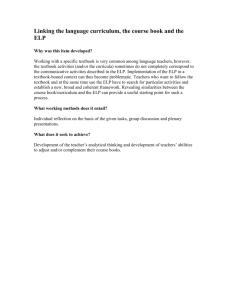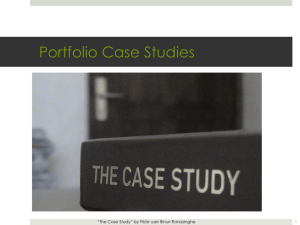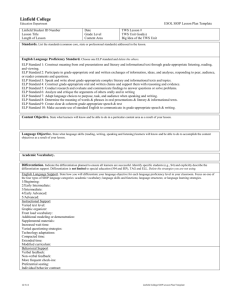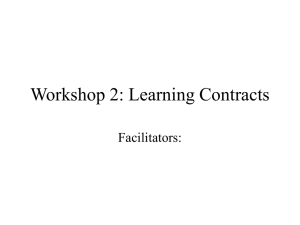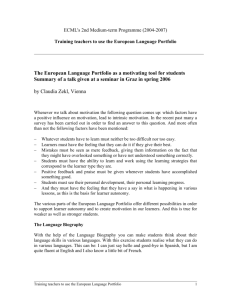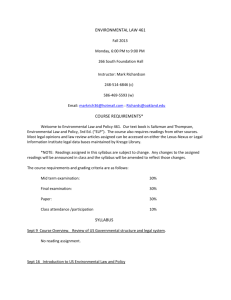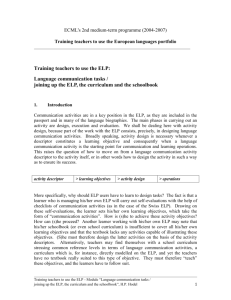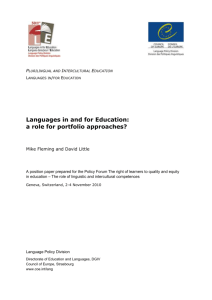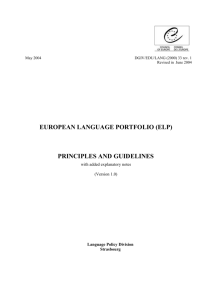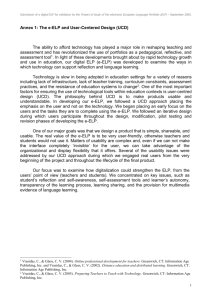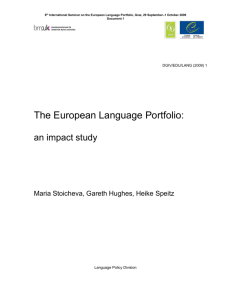Principles, aims and functions of the European Language Portfolio
advertisement
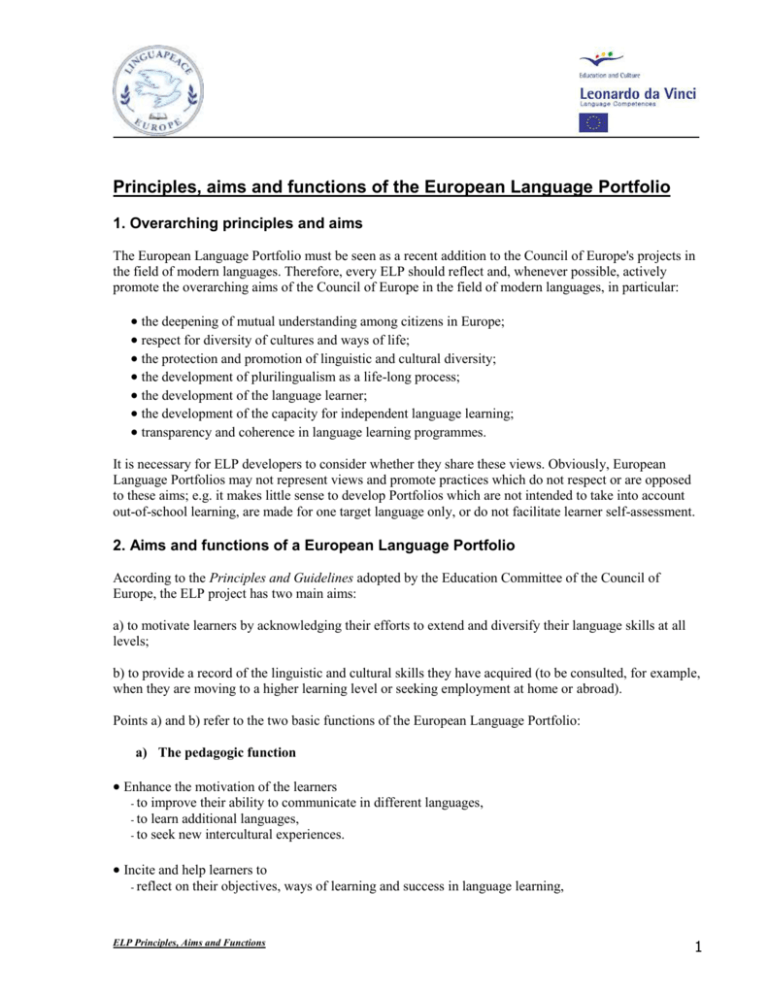
Principles, aims and functions of the European Language Portfolio 1. Overarching principles and aims The European Language Portfolio must be seen as a recent addition to the Council of Europe's projects in the field of modern languages. Therefore, every ELP should reflect and, whenever possible, actively promote the overarching aims of the Council of Europe in the field of modern languages, in particular: the deepening of mutual understanding among citizens in Europe; respect for diversity of cultures and ways of life; the protection and promotion of linguistic and cultural diversity; the development of plurilingualism as a life-long process; the development of the language learner; the development of the capacity for independent language learning; transparency and coherence in language learning programmes. It is necessary for ELP developers to consider whether they share these views. Obviously, European Language Portfolios may not represent views and promote practices which do not respect or are opposed to these aims; e.g. it makes little sense to develop Portfolios which are not intended to take into account out-of-school learning, are made for one target language only, or do not facilitate learner self-assessment. 2. Aims and functions of a European Language Portfolio According to the Principles and Guidelines adopted by the Education Committee of the Council of Europe, the ELP project has two main aims: a) to motivate learners by acknowledging their efforts to extend and diversify their language skills at all levels; b) to provide a record of the linguistic and cultural skills they have acquired (to be consulted, for example, when they are moving to a higher learning level or seeking employment at home or abroad). Points a) and b) refer to the two basic functions of the European Language Portfolio: a) The pedagogic function Enhance the motivation of the learners - to improve their ability to communicate in different languages, - to learn additional languages, - to seek new intercultural experiences. Incite and help learners to - reflect on their objectives, ways of learning and success in language learning, ELP Principles, Aims and Functions 1 - plan their learning, autonomously. - learn Encourage learners to enhance their plurilingual and intercultural experience, for example through - contacts and visits, reading, - use of the media, - projects. - b) The documentation and reporting function The European Language Portfolio aims to document its holder's plurilingual language proficiency and experiences in other languages in a comprehensive, informative, transparent and reliable way. The instruments contained in the ELP help learners to take stock of the levels of competence they have reached in their learning of one or several foreign languages in order to enable them to inform others in a detailed and internationally comparable manner. There are many occasions to present an up-to-date Language Portfolio, for example a transfer to another school, change to a higher educational sector, the beginning of a language course, a meeting with a career advisor, or an application for a new post. In these cases the ELP is addressed to persons who have a role in decisions which are important for the owner of the Language Portfolio. A learner may also be interested in having such documentation for him/herself. Those who receive an ELP from a learner for assessment and similar purposes may be particularly interested in the results of relevant and reliable summative evaluation; diplomas and certificates; other "evidence", for example - up-to-date information based on self-assessment, - attestations/descriptions of bilingual education, schooling in a language other than L1, participation in student exchange programmes, practical training in other language regions, - attestations/descriptions of regular private contacts with speakers of other languages, professional correspondence in other languages, - information on objectives, curricula, etc., - selected written texts, audio and video recordings of oral productions etc. "Evidence" of this kind is important because successful language learning cannot always be documented by means of examinations or diplomas. For example, a learner may improve his/her language skills considerably through stays abroad after receiving a diploma; some aspects such as intercultural competence are rarely tested through examinations. For some languages no standardized examinations or certificates exist (this is often the case with languages of migrants and their children). In order to be reliable, all information must be documented in a transparent manner, i.e. ELP Principles, Aims and Functions 2 it should be clear and possible to verify who (person/institution) is responsible for a statement and would confirm its truthfulness; it should be related to a reference system such as the Common reference levels in the CEF wherever possible; a common language of description should be used. Depending on the kind of use that is made of the ELP, the focus shifts from one element or function of the ELP to another: Central concerns from a pedagogic and methodological perspective - learning processes formative assessment learning incentives learning occasions Central concerns from the point of view of documentation and reporting - results and products of learning summative assessment transparency comparability Portfolio versions for different target groups (e.g. age groups) may put more emphasis on one of the two basic functions and provide more instruments to implement it than another ELP version for a different target group. However, this should not go as far as to neglect one of the two functions completely. ELP Principles, Aims and Functions 3
